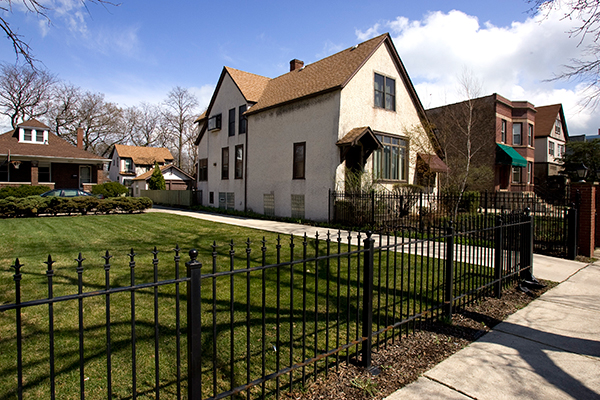
Photo: Chris Salata/Chicago Tribune
A group of houses on the 7600 block of South Shore Drive. Want one?
Q: I know you like South Shore, and I’m thinking of buying a two- or three-flat there. However, there are some arguments against the area, and I’d be interested to hear your take on them. The arguments are roughly as follows:
- There’s still a lot of quite bad crime there once you’re not right by the lake.
- It’s quite a long way south and isn’t served by an el train. Yes, there’s the bus and Metra, but they’re less convenient.
- The area lacks amenities (banks, retail, restaurants, bars, etc).
- Because of (1), (2) and (3), it will be a long time before the area gentrifies.
How much weight do you think these arguments carry? —James
A: They’re all valid, James, and they figure in to why South Shore hasn’t bounced back as well as it might have in the decades since white flight and urban disinvestment took it down several notches.
South Shore has a lot of great features, including beaches, both public at Rainbow Beach and Park and the private ones at street ends; the picturesque Jackson Park golf course and harbor on the neighborhood’s northern boundary; the South Shore Cultural Center; Maryam Mosque, the two-year-old South Shore International College Preparatory High School, and a lot of fine residential architecture.
There’s also the fact that First Lady Michelle Obama grew up in the neighborhood, although of course while that provides some luster, its contribution to real estate values is negligible.
Buying in South Shore is, like buying in a lot of second- or third-tier neighborhoods or suburbs, a balancing act: you balance the pluses and minuses, and you balance affordability against overall appeal. The lakefront setting almost automatically puts South Shore ahead of more interior South Side neighborhoods (those that aren’t direct neighbors of Lake Michigan). And while transportation isn’t A-plus in the neighborhood, it’s better than in many parts of the Southeast and Northwest Sides. The CTA’s new Jeffrey Jump is a step toward improving commute times from South Shore and other neighborhoods.
Keep in mind that black unemployment is far higher than the rate for the overall population, which means that a majority African-American neighborhood like South Shore has felt the drag of the recession acutely. That results in lack of consumer support for retail and restaurants, not to mention a slowdown in real estate.
In crime: It’s a problem; another person was shot to death in the neighborhood as recently as Sunday. South Shore ties with three other neighborhoods for 12th-hardest hit by crime, according to the Chicago Tribune. I’ll leave it up to people with more expertise on crime to say whether current efforts by Mayor Emanuel and Police Supt. Garry McCarthy have had or will have an impact.
Crime aside, some of the demerits you mentioned are interconnected: if there were more transit stations, they might become centers of retail clusters catering to the commuter traffic. Those things breed success; when a few do well, others follow, and so on. WBEZ’s Natalie Moore did a segment recently on how the dearth of retail and restaurants in some South Side neighborhoods impacts life there, and how adding some could help.
I guess my short answer is that as an investor, you’re wise to go into the neighborhood with open and somewhat skeptical eyes, so that you don’t go whole hog on something you might regret later. But I wouldn’t stay away from South Shore. It has some good fundamentals mixed with its negatives—and those add up to make prices more affordable than they are in Hyde Park, the South Loop or a North Side lakefront neighborhood.


